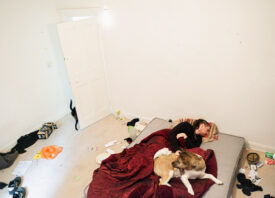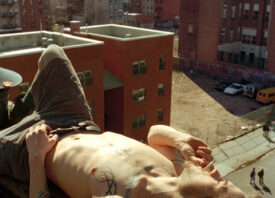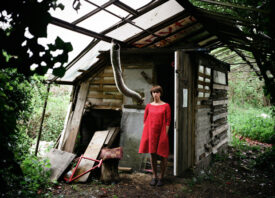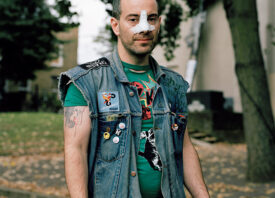Search this site
An Insider’s Look at the Communal Squatting Lifestyle in London
Group cuddling in a squat on May 11, 2013 in London, United Kingdom. The communal squatting lifestyle often creates strong bonds between the residents and a family feeling.
Residents are building and repairing in a squat called ‘Downtown Restaurant’, a former cabaret restaurant in London, United Kingdom.
South African based documentary photographer Corinna Kern finds inspiration in those who live on the fringes of society. By getting to know different kinds of people and immersing herself in their lives, she’s able to engage with the world in a special way. For her long-term project, A Place Called Home, Kern became part of the London squatting community for several months. Through her images, she explores the idea that home is more of a feeling than a physical space.
A ‘squat’ is a term for a building occupied by people who do not own or pay rent. They are usually unoccupied or abandoned factory spaces or residential buildings. Kern moved into a squat in Kentish Town, London and quickly had to learn how to coexist in one building with 30 people and three dogs. Through the connections she made here, she visited six other squats throughout London. Once of the most noteworthy being “The Castle” – a former five-story office block in central London that is now a home for more than 100 squatters and doubles as a site for raves.
With London’s high housing prices and affordable options in short supply, squatting can seem an appealing option to some. What might commonly be perceived as a shelter for the homeless or poor is often a conscious choice – an alternative and communal way of living. The lifestyle of a squatter demands the ability to change and adapt. It attracts those seeking adventure, freedom and friendship.

A couple sits on the rooftop of a squat called ‘The Castle’ in London, United Kingdom. Once used as a five-story office block, the building became home for more than 100 squatters and was used as a location for parties.

A resident relaxes after a rave in a squat called ‘The Castle’ in London, United Kingdom.

Room in a squat called ‘The Castle’ after a rave on May 09, 2013 in London, United Kingdom.

Sitting under a sleeping bag, a squatter makes a phone call and smokes a cigarette on the rooftop of a squat called ‘Borough High Street’, a grade II listed building.

Fabrics are used to section rooms in a squatted fabric storehouse on June 22, 2013 in London, United Kingdom. Hundreds of abandoned fabric rolls are further reused as bed sheets and pillows, decorations for ceilings and walls and set up little tents.

A girl draws in her new home, a squatted fabric storehouse in London, United Kingdom.

A resident smokes a cigarette in a squatted fabric storehouse in London, United Kingdom.

A squatter takes a rest in shelves used to store fabric rolls inside a squatted fabric storehouse on June 24, 2013 in London, United Kingdom.

Two residents relax in a squat called ‘Blackfriars’, a run-down building without water facilities and electricity on July 26, 2013 in London, United Kingdom.

A girl has breakfast in a squat called ‘Blackfriars’, a run-down building without water facilities and electricity in London, United Kingdom.

Two residents check a freshly squatted building formerly used as design studios on June 16, 2013 in London, United Kingdom.

A room from fabrics in the ‘Kentish-Town-Squat’, a building that was formerly used as design studios in London, United Kingdom. Privatsphere is rare in squats since several people usually share one room.

A resident lies in her room made from fabrics in the ‘Kentish-Town-Squat’, a building that was formerly used as design studios. Privatsphere is rare in squats since several people usually share one room.
All images © Corinna Kern





